Krishna, a complete avatar | Mohanji
Krishna, a complete avatar
This is an interview with Mohanji for the Guruvayur community
Krishna – a complete avatar
I won’t take more time in elaborating why I’m here. We’ll talk about Krishna straight away because that’s what we are here for. My job or my task is to deliver some dimensions of Krishna to you.
This is a tough task because Krishna is indefinable. You can’t define him. Any avatar you can’t define, especially Krishna, because of his multidimensionality. His dimensions are so many – very difficult even to fathom or try to understand why or how he operated. We can only take some signs, and we can interpret them as per our understanding or our capacity.
First of all, the first thing we must know is that Krishna is beyond comprehension. As we talk further, I’ll explain it more. You can’t comprehend Krishna. If at all we try to attempt to put Krishna into some kind of a bracket, he slips fast; you can’t hold him there.
Another thing you need to know is that his time (Dwapara Yuga) had a particular flavour. It’s said that the life span of Dwapara Yuga was 1000 years. Now, in Kali Yuga, it’s 100 years. So, his canvas was larger, but dharma was still existing at that time, to some extent.
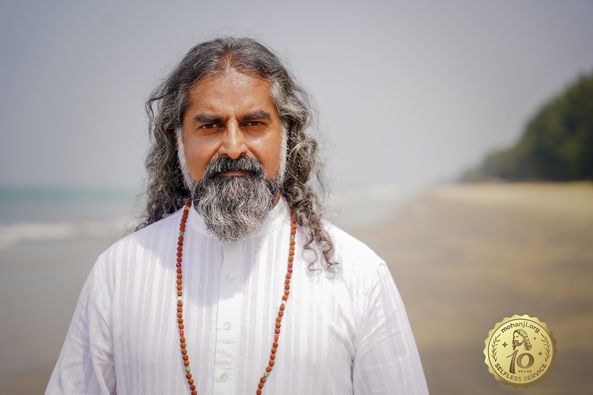
Any avatar you can’t define, especially Krishna, because of his multidimensionality. Krishna is beyond comprehension.
– Mohanji
If you look, there were families who operated from righteousness. Clearly, they didn’t do anything which was unrighteous or any kind of violence in his time. You can see that. There was a strong base of dharma operating at that time. Now mostly what you see is adharma operating today.
That’s the difference we must know – his time. Then he came; he took a body. His advent was for bringing forth the higher possibility before the close of Dwapara Yuga because it’s said that after he left the body, Kali Yuga started. Kali Yuga came in. There was a very specific context with which he operated or in which he operated at that time.
The operating level is very easy to understand as avatars – rithambara buddhi (cosmic consciousness) level. Not the level of local intellect, not the level of acquired knowledge, which means not the knowledge which is derived or collected from the society, from teachers, parents or religion.
That wasn’t the education that his operating level prescribed. Even though he was under the tutorship of Sandipani, Sandipani knew very well this was an avatar he was teaching. Nothing to teach him, nothing to give him, only to reveal. When will Krishna reveal? Every day or whenever he has to. There the teacher doesn’t have any role to play. A teacher helps a student to reveal himself.
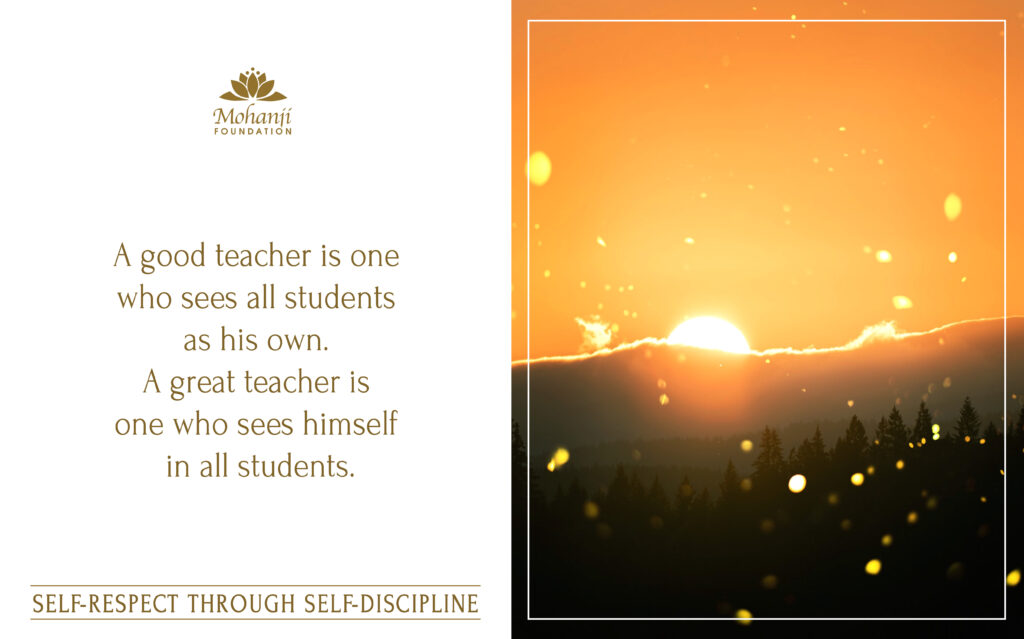
But here, in Krishna’s situation, Sandipani had nothing to do with Krishna’s revelation or his time of revealing because that was spontaneous for him. Krishna revealed himself even as a small child, like a three-month-old or two-month-old child, because he handled situations which were extraordinary, even as a child. Please remember – no avatar had a smooth life. No avatar ever had a smooth life.
Look at the story of Rama. Rama was wandering. As a child, as a youth, he was going around with Vishwamitra, and he developed an aversion towards ruling, and what happened? He told Vishwamitra, “I can’t do this job. This whole politics and this ruling, the royal life, doesn’t suit me. I would rather be with nature. I would rather be with the consciousness, in meditation, in penance.”
What happened? He got an opportunity to be in the forest. Even a thought manifests, just a thought. So, the state definitely manifests. In the state of Krishna, he was operating from the level of rithambara buddhi (cosmic consciousness). There are two operating levels otherwise.
One is acquired knowledge. We acquire knowledge from books, people, teachers, parents, and society. We believe that’s the truth because it’s told by reliable mouths, and we operate in that way. The other operating level is through analysis – logical mind. That means we derive it. We derive this information. The third or the most important is the rithambara buddhi (cosmic consciousness) – always being aware.
All the great masters operated that way, avatars especially. They operated from the level of cosmic consciousness. They were aware that awareness is the path to cosmic consciousness. No other sadhana will work that much – when you’re aware, when you’re constantly aware of everything (physical, emotional, intellectual), all aspects, being aware, but not interfering.
When you saturate yourself in awareness, it shifts to cosmic consciousness. That’s a normal shift. Awareness of consciousness shifts us to cosmic consciousness. Krishna was operating from that plane – that he revealed, especially when he delivered Bhagavad Gita.
When he delivered Bhagavad Gita, he didn’t talk of him as a unit, as a personality. He spoke of him as the creator, as the universe, as the universal consciousness.
That was very, very clear when he delivered Bhagavad Gita. Again, he revealed himself when he went to negotiate the deal between Pandavas and Kauravas, and Kauravas said, “We’ll not give them even one inch of land.” They tried to arrest the messenger, who was Krishna.
He revealed his Vishwa Roopa (cosmic consciousness), brighter than a million suns (divya surya sahastrasya). He displayed himself. Thus, he revealed who he was actually. Normally an avatar lives a very ordinary life. Krishna also did that. He never even had expectations.
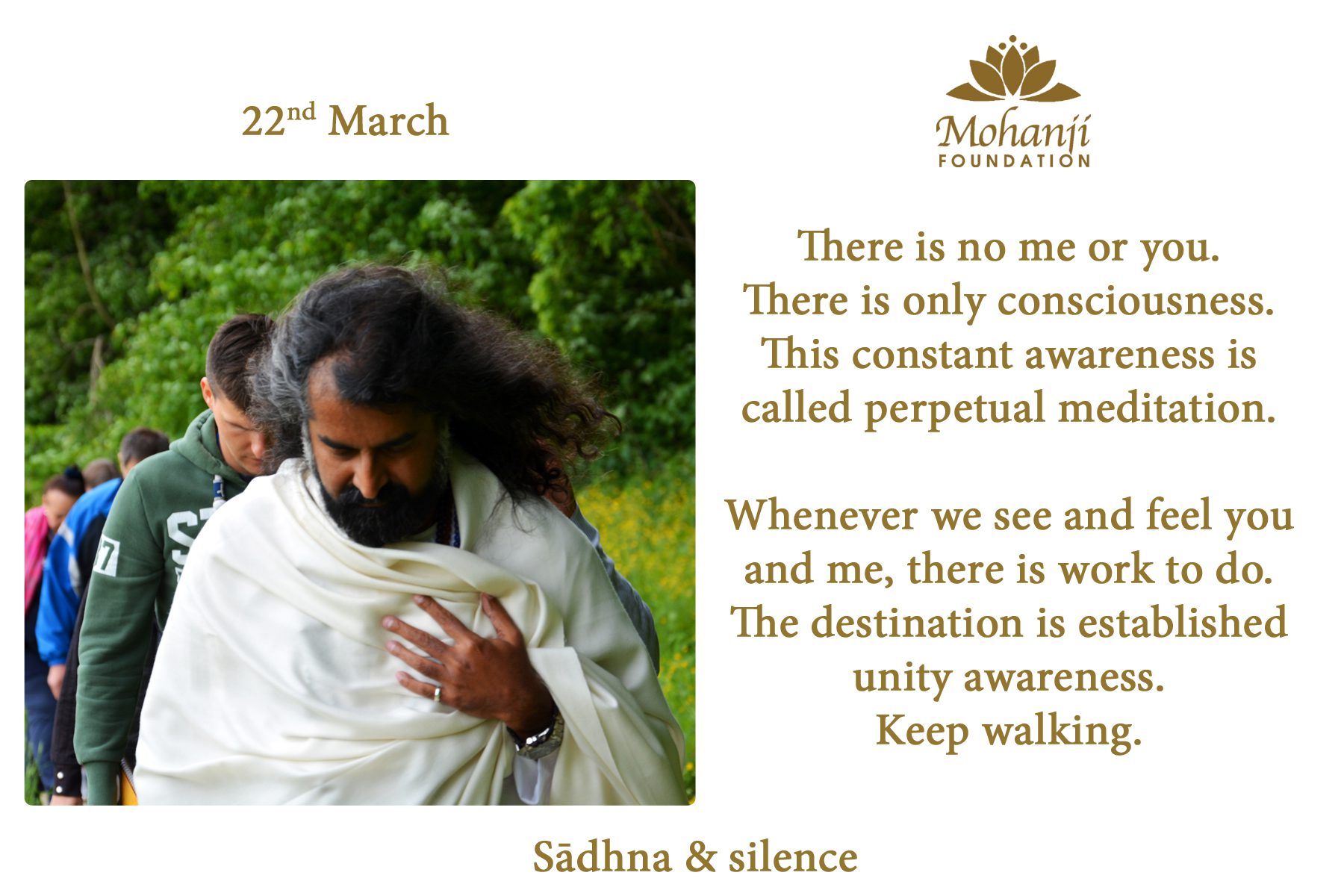
He didn’t have expectations, even that people would know him and recognize him. It’s very difficult to work in society if you’re not known and if you’re not recognized. Krishna was a cowherd in Vrindavan. He was tending to cows, but he was revealing himself spontaneously many times.
The real revelations – one was when he displayed himself to Arjuna, “Who are you?” He said,
“This is me.” in the 11th chapter of Bhagavad Gita. That was the time when he showed himself.
But please remember – even if a master or an avatar shows himself, hardly anybody can actually see. You need to have the eyes to see the glory of a master or an avatar, especially an avatar. Not many people knew Rama was an avatar because Rama went through all the tribulations of human life.
These are some of the fundamentals we should know. The operating level was rithambara buddhi. His time still had a chance of dharma, righteousness, existing there. There still was a goodness factor. Today, we need much more intensity to reach that state because we are in the midst of contamination. The operating level is simply mind and senses.
What’s agreeable to our senses is what we consider as real and good, or the mind or the maximum will be intellect. What’s suitable for intelligence, intellect – that we consider as the truth. That’s why truth is distorted so much today. Earlier, if you were focusing on your feelings, if you were focusing on your awareness, the truth couldn’t be distorted so much.
The truth won’t be distorted because you’ll know. When truth happens, you’ll know because you feel. When the feeling is lost, especially when the conscience is disturbed because we do things which aren’t suitable to the conscience – if that happens, feelings cannot manifest properly, or feelings are not felt well, and naturally, we’ll lose track.
Krishna as a child
Coming back to Krishna, as a child, he was performing dharma. How was he performing dharma? Very, very simple. He liberated even the demons. The people, the negative beings Kamsa sent to kill him – he liberated them, such as Putana and many people. Many beings, whom Kamsa, his uncle, sent to kill him, he liberated them. This is one aspect of an avatar.
He just didn’t kill them. He ensured that the being was dissolved – not like a soul hanging around without a body. When you kill, the soul exits the body but doesn’t go awaybecause everybody is body-bound. All of us are body-bound. All of us are personality-bound.
We don’t exit easily. Even with death, when the physical is gone, still the subtle remains. Krishna ensured Putana attained moksha. Moksha is liberation. That’s an avatar. Even as a toddler, even as a child, in every aspect, his method was liberation. That shows a powerful avatar, a complete avatar, one of the things which I can definitely say.
Everybody who came to him, even to kill him – he honoured them, respected them, touched them. Touching an avatar itself, forget about any other aspect, but even coming in contact with an avatar is a sure guarantee that liberation has landed in your life.
Various beings came to Krishna. He touched them. Some of them were killed, but their souls didn’t hang around. They were liberated. This is a sign of an avatar – no residue on earth; complete cleansing.
He didn’t release toxic energies. See what happens; imagine a person has very negative feelings. Hiranyakashyapu had very dark feelings; he hated God, thinking he was God. ‘I am God, and everybody else is below me.’ Illusion. Delusion. Ego.
When ego happens, the corresponding stubbornness happens. When ego and stubbornness exist, liberation is impossible. You cannot be liberated because you are stuck to your physical.
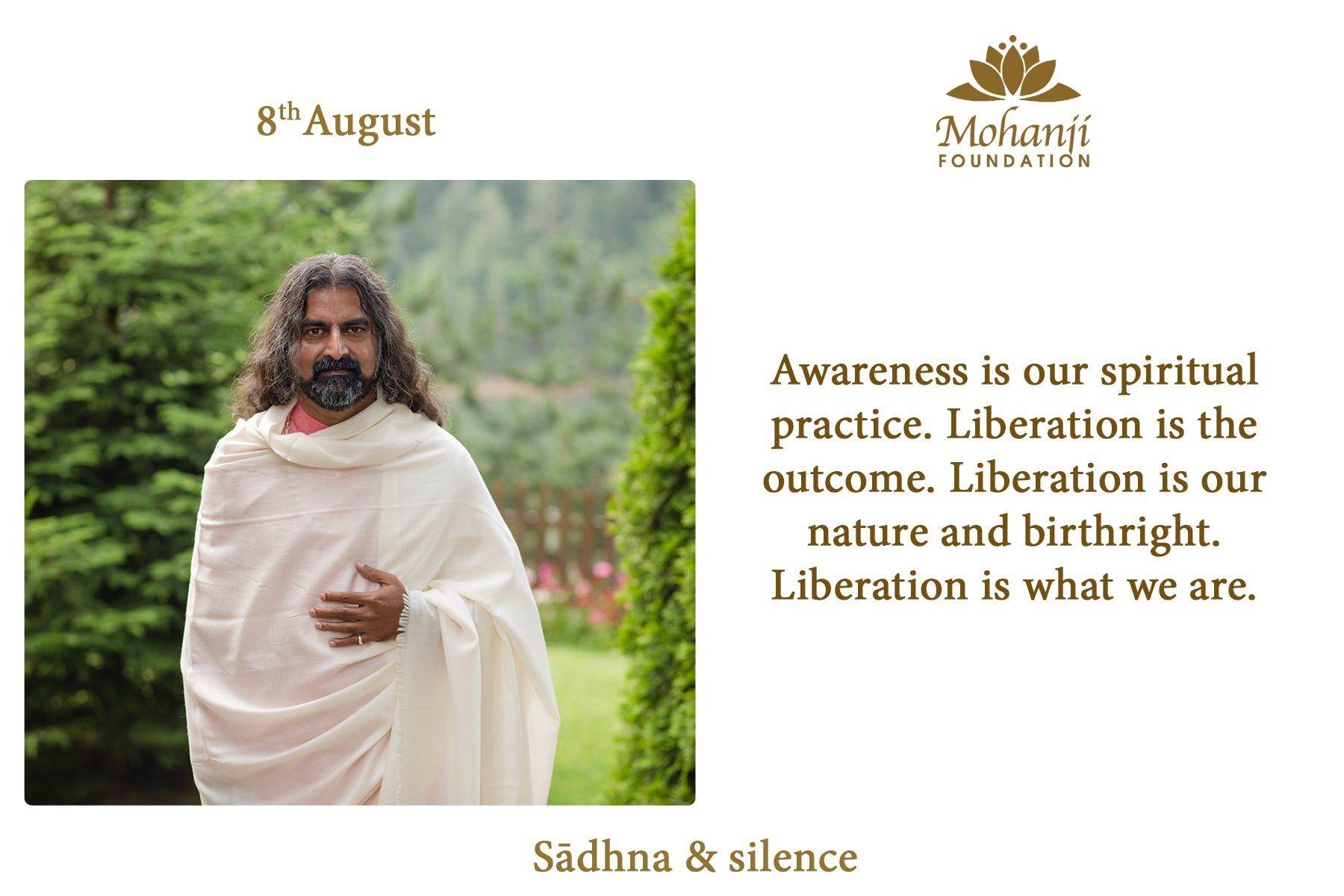
Hiranyakashyapu had the same problem. Likewise, most of the people who had a toxic interior inside all felt they were the truth, or they commanded the truth, or at least they controlled people.
When they were killed, Krishna didn’t release them as toxic. Sukshma (subtle) still remains, sthula (gross) has gone. The gross has gone – dead. Sukshma still remains. What’ll happen if the sukshma still remains on earth? Either they’ll enter another body, or they’ll take another birth.
Both are dangerous because it’s an unending loop – cycles. What did Krishna do? He liberated them. They don’t have to come back. He cleansed them, liberated them. This is a sign of an avatar.
What do people usually do? Imagine that somebody possesses somebody. There’s an energy possessing somebody. Usually, what people do – they take them out, exorcise them, and bind them. Krishna didn’t even bind them. He liberated them. That’s an avatar.
Liberation is the sign of an avatar – staying liberated. He was liberation incarnate. He liberated all the people who came to him, not just people. Cows and calves, birds and animals who came to his proximity were given the guarantee of liberation. They all got liberated. That’s the avatar.
Krishna, as a youth
Now Krishna as a youth – I think I’ve explained about as a child how he liberated. That’s a sign of an avatar. We are talking about a complete avatar. As a youth, unbound, exuberant, he was enchanting. Mohana, somebody who attracts, somebody who enchants. Enchanting becomes your nature when you are completely within yourself. You become like an extraordinary magnet because you’re not scattered.
Why do we not experience that feeling of being one?Because the mind is all over. The mind is mostly in the events of the past, experiences of the past, memories of the past, or anxiety over the future.
When the mind is occupied in so many things, illusory things – the past is finished. You can’t do anything in the past. There’s no point in staying in the past. The future is yet to be. We don’t know which course the future will take.
What’s your reality? Right now. Today.If the mind is existing in today, this is the sign that you’ve started being in awareness. If your mindis existing now, existing today, enjoying the fruits of now, not expecting too much.
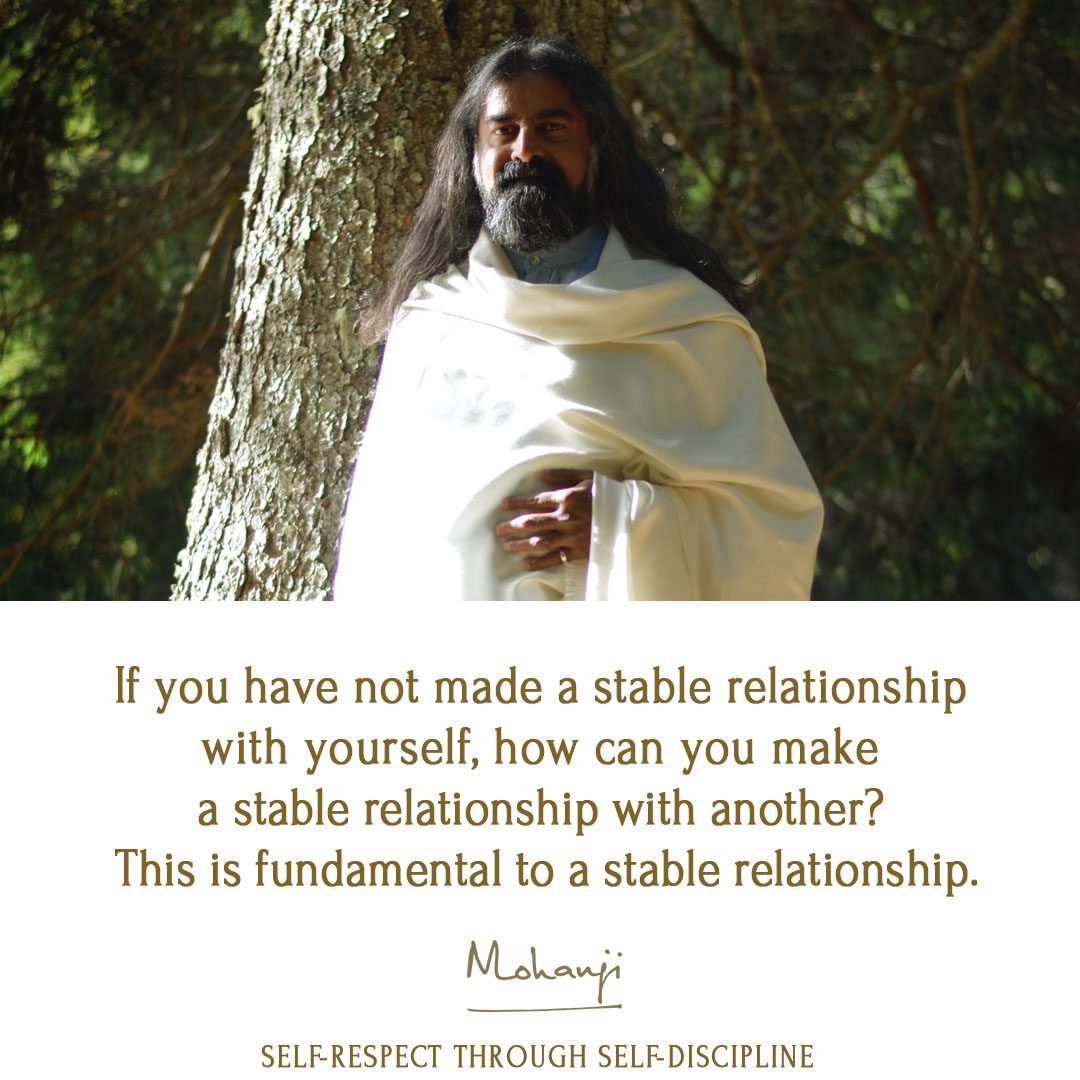
Like Krishna, as I told you about expectations, I’ll come to that. Not expecting too much, being in the now and experiencing life as it comes – without discrimination.
Thoughts that come, emotions that come, everything that happens in you – if you’re not discriminating against them, if you’re not fighting them, you are one with them. You are one with all your feelings, all your emotions, and all your actions. That makes you stable in the now. If you are stable now, you’ll be stable tomorrow.
That sign you can see in Krishna. Now about expectation – I touched upon it earlier.
Krishna and Duryodhana
One of the clear signs of expectation – Krishna was dressing up to go to see Duryodhana. Duryodhana is not a positive person here; he has a toxic mind. When I say a toxic mind, he had desires of a selfish nature. That’s a toxic mind. The ego makes the inside toxic.
If you feel you’re bigger or higher than somebody, that brings a toxic situation to your mind. Like that, jealousy, greed, anger, hatred – all these things create toxins inside. That contaminates us. Duryodhana had that situation to some extent or to a reasonable extent.
Krishna was going to see him. Krishna was also a king, and he was dressing up. He was dressing up too much. Normally he didn’t dress up so much. He used to get ready very fast. His charioteer was amazed or amused to see Krishna dressing up so much. So, he asked him, “Why are you dressing up so much?” He said, “I have a very important meeting.” He asked with whom. He said, “With Duryodhana.”
He said, “Lord, you are an avatar. You are a Lord. You are an avatar of Maha Vishnu. He should come and meet you. You shouldn’t go and meet him.”
Krishna asked, “Tell me one occasion where darkness came to meet the light. It’s always that light goes to darkness. I go to him.”
Then he said, “Why are you dressing up so much? He is not worthy of that because of his ideas, and he is an angry man; he is a jealous guy. Why do you do that?”
Then, he said, “He can’t see who I’m actually. Who I actually am, he cannot see. Let him see my costume.”

That’s exactly where Krishna didn’t even expect people to recognize him. Mostly, we know of Krishna as an avatar much later, many years later. Five thousand six hundred years later, we know him as an avatar. A lot of people recognized him; Vyasa recognized him. Many people recognized him.
That happens, but most people cannot recognize him – an avatar. When you talk about Krishna as a complete avatar, it’s like a blind person going to check on an elephant how the elephant looks like. He touches the leg. So, the elephant is like a pillar. When he touches the trunk, oh, he is like a horse.
Like that, part by part, we try to recognize an avatar. Then we fail. We decide. That’s why today, most of the things that we see are an interpretation of minds about truth, not the truth. It’s not the truth. They are an interpretation of the truth by minds which has capacities. Okay, that’s about it.
Krishna and 16,008 wives
About Krishna, as a youth, he was unbound. He was doing things which today they would say are scandalous. But one thing I’ll tell you, one of the major problems for people about Krishna is his number of wives – 16,008 wives. So many wives. But he lived 125 years.
Lifespan was, as I said, the lifespan was longer during Dwapara Yuga, and Krishna, in that context, is about 30 years now. Krishna had all these wives. The exact situation is not understood by people who claim that Krishna was a flamboyant person. He was, of course, he was very enchanting, but more or less like a Romeo. That’s not the thing here.
When he released people from prison after killing one of the kings… It’s not important to know the details but to know the context and the point here. All the people who were in the prisons, many people. Some were in prison because they did not agree with the kings, not because they committed any crime.
Sometimes the entire family was in prison because one of the family members had to be taught a lesson for the crime he committed. So, what they did was put the entire family in prison. Torture and all these things were part of the correction methods.
When they were all released, Krishna said, “You can all go back home. Be peaceful. Nobody will touch you. I’ll ensure.” They went back home to their places.
Later on, most of them came back to Dwaraka, to Krishna, and told Krishna, “Krishna, earlier in prison, we used to get food three times. Now, in society, we are all convicts – ex-convicts. Nobody wants us. Nobody allows us to come to their homes. Nobody cares, and nobody gives us food. We are starving.”
Krishna gave all the women royal wife status. What happens when a person is a royal wife? They get a pension from the palace. They get money from the palace. They are taken care of by the palace. All of them went back to society as royal wives. Everybody respected them; everybody invited them.
Some were very old. Some had spent a lot of time in prison and were very old. So, don’t think that all these wives, so-called wives, were very young. No, some of them were very old.
Krishna was a revolutionary. He gave them royal wife status so that they would never have hunger; they were taken care of. This is the mind of an avatar or the state of an avatar. But when people think about wives, girlfriends and stuff, they always believe or think this is in a very emotional or on the plain mind level. That’s not true.
Again, as a youth, he was unbound. But that’s exactly how the youth should be. If you restrict things, all the things become a thing for the future, which means it’s suppressed. When you suppress things, you’ve got to take birth to fulfil them. So, at every stage of his life, he completed his things. Everything was about completion.
Krishna and Radha
Look at the relationship he had with Radha. There are so many stories or so many theories connected to it; we are not looking at theories. What was Radha’s strength? Of course, purity. She was very pure, but most importantly, she wanted Krishna to be happy, not that she wanted for herself. “What am I getting?” She never asked. She always thought – Krishna should be happy.
Krishna should be good – feeling good, protected, and loved. She did everything to ensure Krishna was happy. Imagine a life of sacrifice, a life of deep, deep love which makes a person full and complete in that love.

Another aspect is that her meditation and penance were the waiting for Krishna. Krishna was busy. He hardly turned up, but her wait was without complaints. Again, please remember when you complain or when you expect, your mind takes over; emotions come, and you get deluded completely.
Then you compare, “Oh, I am not treated well. Why is Krishna with another person?” All these kinds of nonsense come, and then the mind is clouded. You don’t see the truth. But here, in Radha’s case, even when the Gopis told Radha, “Hey, look here. He’s sleeping with a lot of women, probably.” Radha asked only one question, “Is he happy?” That makes a powerful personality.
She was a very powerful personality, so powerful that we have Radha and Krishna temples today. The power and integrity of a personality make that person eligible to be a deity. Radha is a deity. She waited without expectations for Krishna, and that waiting and waiting and waiting became her strength.
Also, because she only wanted good to happen to Krishna, the story where the wives of Krishna got jealous of her and gave her boiled milk to drink, saying that Krishna sent this. “Oh, Krishna sent this?’ She drank boiled milk. It can burn the entire throat and all the organs inside. She drank and gave the glass back.
When Krishna came for lunch, he said, “I can’t eat anything. My whole throat is burned.” It means Radha in consciousness was so merged with Krishna that whatever should have happened to Radha happened to Krishna.
The same thing happened with Vyasa.
Krishna and Vyasa
We must understand this very clearly. That connects to our bhakti, devotion.
When we say we are connected to a master or a Guru or a God, ask these questions, “How much? How deep?” These questions are very important.
Vyasa was sitting at the side of the river, waiting to cross over and meditating. The river was swollen. Yamuna was swollen; water was going outside, flooded, and gopas (cowherds) and gopis (cowherdesses) came with a lot of sweets and said this was for Krishna.
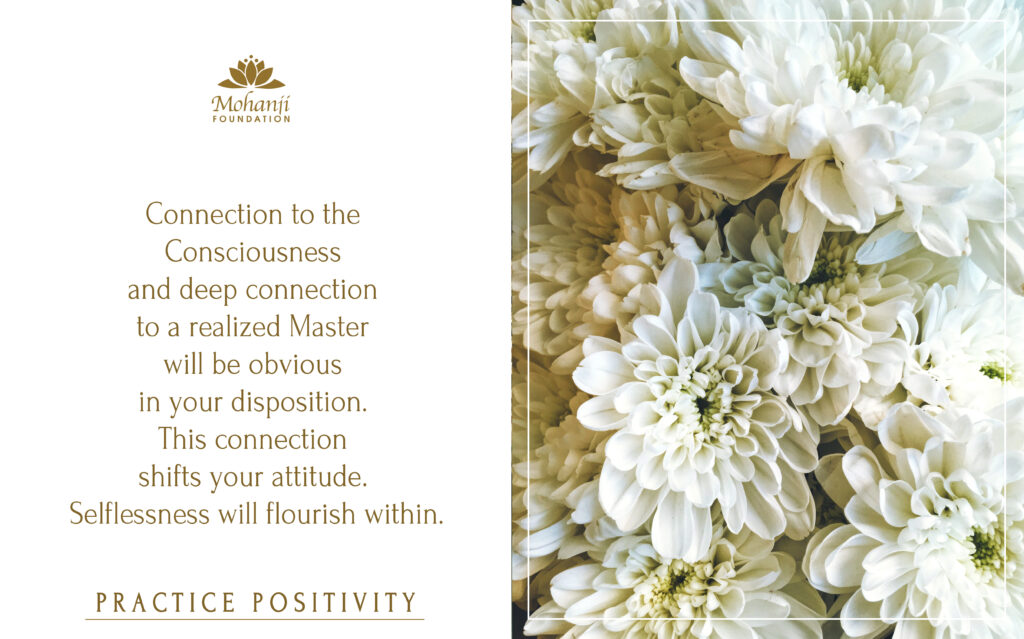
Vyasa ate most of it, and finally, when he got them to cross over and meet Krishna, Krishna said, “I can’t eat them. I ate them just a few minutes ago or hours ago.”
The same thing – when Vyasa was eating, Krishna was getting it. They were so integrated into each other. These are all signs of how well they were all connected. We need to consider our bhakti also in these lights. We should think about them in these lights.
Krishna as a politician
Now Krishna as a politician, a moderator. If you look at Krishna as a politician, politician means he was like a mediator, and moderator, going between Pandavas and Kauravas, trying to sort out things, trying to bring justice.
But if you look at Krishna’s life, all that he did – one thing, the ground, the thread was very clear – righteousness. He did everything so that general righteousness prevailed.
He might have favoured Pandavas. Why did he favour Pandavas? We must understand that in a different light. I’m telling you this because from the context of Bhishma, if you think, you’ll know why.
Why did Krishna favour bhaktas? He favoured Poonthanam. He told Melpattore, “I like his bhakti (devotion) more than your vibhakti (separation).” That’s because it’s not knowledge, not analysis, which gets you closer to subtlety.
Analysis keeps you with the brain, with intellect, but when you are closer and closer to subtlety, for which bhakti is a very good path. Devotion is a very good path. Awareness is even better because you become that. But that Raja Yoga path – that’s not easy. It’s not easy because you’re connecting to pure brightness. That’s not easy. But bhakti is a very good path, a very smooth path for connecting to consciousness.
When a person stops analyzing and starts feeling, starts submitting, starts surrendering, the deity, God, cannot do anything. He becomes helpless. Love makes a God helpless. Devotion makes God helpless.
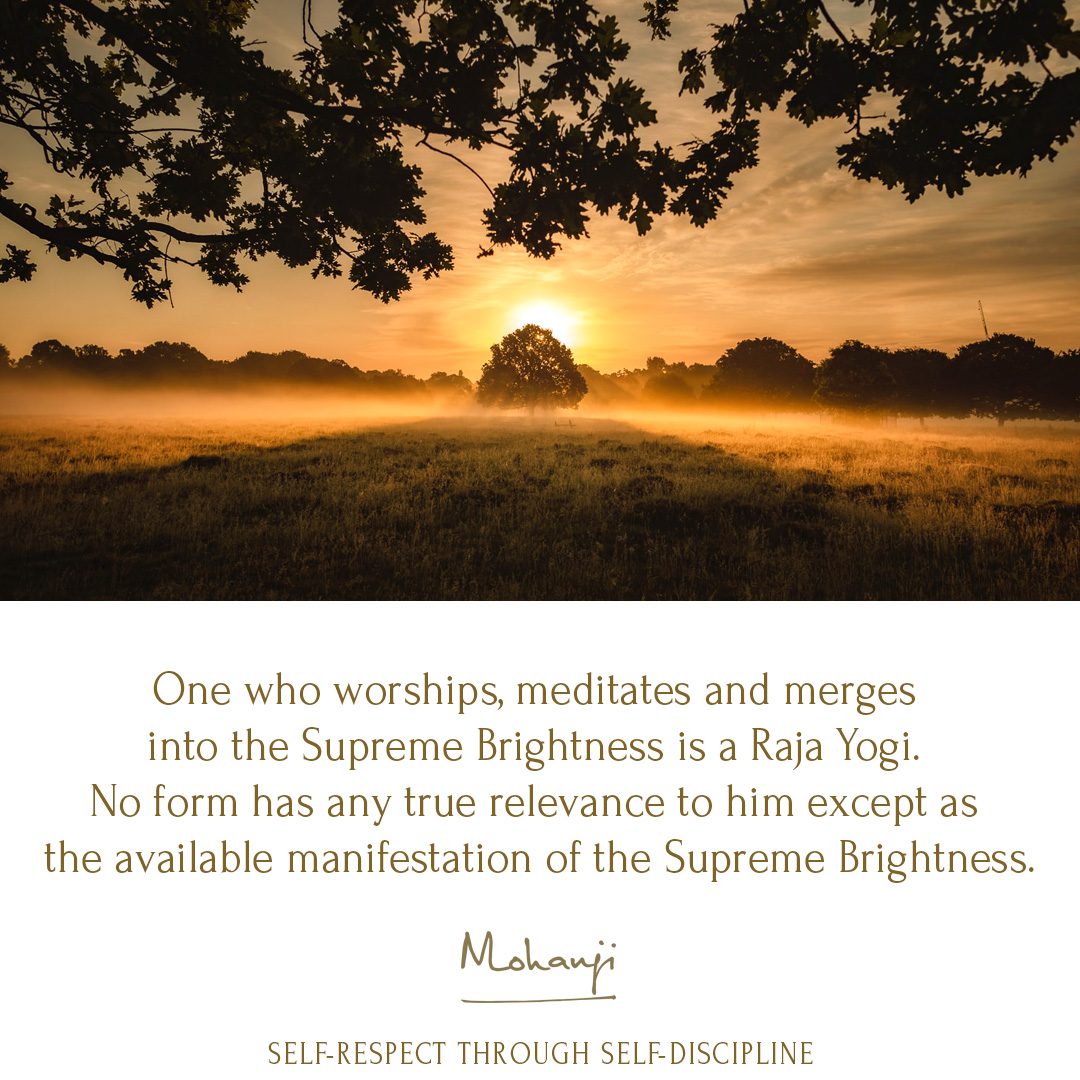
But if you’re analyzing, if you’re thinking, you’re comparing, then it’s okay; you’re in the intellect plane. That’s why Krishna favoured (Pandavas) because all the Pandavas had surrendered to Krishna.
I don’t know whether they understood Krishna as an avatar completely. Probably not. Even Arjuna didn’t understand Krishna or recognize Krishna as a complete avatar. He took him as a friend. Krishna was Arjuna’s friend.
So, like a friend, “Okay, we can have tea together, drink together.” That’s about it.
But Kauravas recognized that he was dangerous as a politician because he had an awareness of the past, present and future. Such people know what they’re doing. That’s not good for people who want to manipulate.
People who like to manipulate and control through fear don’t like people with awareness.That’s why they get crucified; they are killed because they are dangerous for them. For the good and the righteous, they are hope. They are the path, the destination.
In this case, he was totally based on dharma. I’ll tell you why.
Krishna and Bhishma
As I said, Bhishma was lying on the bed of arrows for the hemisphere to change to Uttarayan (northward movement of the sun), the time to change Uttarayan and Krishna came on the pretext of explaining to Dharmaputra (Yudhishthira), but Bhishma recognized him. He said, “Look here, an avatar is standing next to me. I’m leaving my body. What else can I ask for?”
Then Krishna, in the pretext of explaining the dimensions or whatever to Yudishthira, actually favoured Bhishma. Bhishma said, “Now you’re standing outside of me, but you should stand inside me because when I close my eyes and die, I may miss you because you were outside. Please come inside so I go with you.”
You see, Bhishma, with all his vows and tapas, earned Krishna. He earned the avatar.
The same with Ravana. I’m not deviating, but just to prove this point.
Do you think Ravana was a fool? An arrogant, egoistic king? I think he was very smart because when the homa (fire ceremony) was done for the auspiciousness and victory of Rama and Ravana was the presiding priest, Ravana was a brahmin, and he was also a king. A brahmin and a king can never say no. They are not allowed to say ‘no’ dharmically, in dharma.
He came, he attended, he did his job well, and he told Rama, “The ceremony was good. Well done. It’s all done well. You will have victory.”
Rama asked, “What dakshina (offering or a gift) can I give you?” Then he said, “You’re a poor man. You came from the forest. I’m a king; I’m a rich man. What can you give me?” But dakshina has to be given. That’s a rule; that’s a norm.
Rama said, “I must give you something.” Ravana said, “When I die, stand by me.”
Can you believe it? He asked for dakshina because Ravana knew Rama was an avatar. That’s the thing here. He knew Rama was an avatar. “When I’m leaving the body, let me see you. You be here with me when I leave the body.”
He took insurance that liberation is guaranteed. An avatar coming to you or you remembering an avatar – that’s the beauty of Narayana. Narayana means the destination of man. The destination is supreme consciousness. Man is unit consciousness. The destination of unit consciousness is supreme consciousness. That’s represented by Krishna.
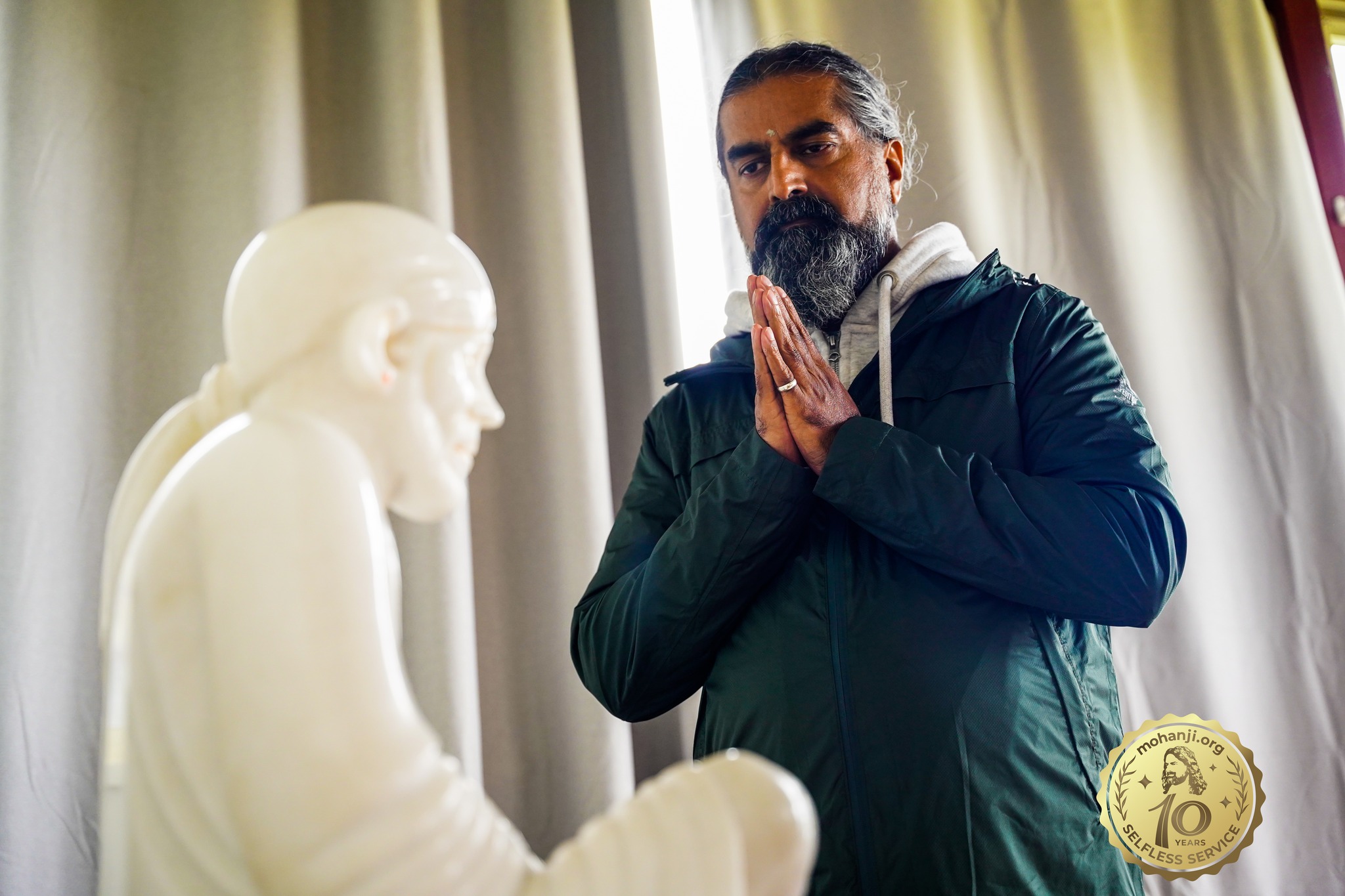
When you remember the name of God, a Guru, or an avatar, you reach them, especially at the time of death.
– Mohanji
When you remember the name of God, remember the name of Guru, remember the name of an avatar, you reach them, especially at the time of death. That needs grace. You need to work towards that – a consistent connection, consistent surrender and remembrance.
So, all this happened while he was a politician. He was actually a mediator. At that time, also he was fully established in righteousness and never ever deviated from the purpose. Whatever he did, his purpose was to preserve dharma on earth.
He never deviated. Every action was to liberate somebody or to set dharma in motion.Even in the war he waged, he didn’t take up arms, except when that question of dharma was at stake. Beyond everything, he was practical – heavily practical. No nonsense; no emotions – practical. This is exactly how he was.
Krishna as an enchanter
Now, as an enchanter, that’s the main thing that we always remember. He was enchanting because it was his nature. The nature of the sun is heat and light. Whether the sun chooses to deliver heat and light or not, that’s his nature. When there’s the sun, there’ll be heat and light. Similarly, Krishna never chose to be an enchanter. He had no interest in that kind of thing.
But by nature, that was his nature, he enchanted. The flute he played enchanted, his dances and his leelas (plays or stories) enchanted. That wasn’t because, as a child, he enchanted. That wasn’t because he chose to do these things. That’s what we should remember.
There’s no pretension here. Expressing nature is authentic. Pretension isn’t authentic. Imitation isn’t authentic. But if you express your nature, that’s authentic. You’re supposed to express your nature; actually, all of us. Our personality is an expression of our nature. Our likes and dislikes are expressions of our nature. We are all helplessly expressing our nature.
Our intelligence or stupidity is also connected to this – an expression of our nature. So, Krishna was simply expressing his nature. When he lifted the mountain to protect the people of the Vrindavan, he was expressing his nature – unlimitedness,unlimited power, and possibility. We fail to see that.
Like that, we also do not know our power. We are controlled by our minds. The mind has put us in a box, and we walk within like a rat trapped in a cage. We walk inside and think, “Ok, this is our life”, and then we get excited when we get some food. We get excited when we can do some things which are of sensory nature. We never ever realize that’s our binding.

But when Krishna was doing certain things which were extraordinary, he was also telling the people of that time and beyond, “You are multi-dimensional. You have all the powers. Why are you trapped in your mind or a mind-trapped state like a slave?” That’s the thing.
Today, if you look at Krishna, in various temples you take, of course, Guruvayur is Vaikuntha form, which means Maha Vishnu. That also has significance, especially because Brahma told Maha Vishnu, “You’re too big; you are too large to see. I can’t see you. You’re so brilliant – brighter than a million suns. I can’t see you. How can I worship you if I can’t see you, feel you, or touch you? How can I worship you?”
That’s the time when Maha Vishnu gave Brahma the idol, which is in Guruvayur now. That idol is the form of Maha Vishnu, as he can be worshipped. Otherwise, Maha Vishnu cannot be seen.
What we perceive, he comes as or as we perceive, we see him. That’s all we can say. But they are unfathomable, unknowable, huge consciousness. Consciousness is huge, much larger than the created universe, much beyond. You can’t see. That’s how he came, and then that idol was delivered through prajapatis (supreme creators) to Vasudeva, Vasudeva to Krishna, and now in Guruvayur. We know the story.
Krishna’s dimension
When you look at Puri, you can see huge eyes and hands reaching forward. Sahasraksha sahasrapaad. That means thousands of eyes – all the eyes that are operating here are Krishna’s eyes. All the hands, and limbs, are also the Lord’s.
In all the earth, everything, inside everything is the Lord. When you start seeing that thing inside all beings, like Bhishma told that Shikhandi is neither a man nor a woman, it means in between.
When Shikhandi came in front, Bhishma didn’t fight because Bhishma would fight only with a man, another man. He stopped fighting, and Shikhandi attacked him. Bhishma said, “He’s not Shikhandi.” His eyes could see who was inside him. It was Narayana. It was the Lord inside him.
If we start seeing the Lord in every being who comes to us, in some form, the Lord is coming to us; your master is coming to you, or Guru is coming to you; if you are able to perceive that clearly, your chitta (inside) becomes pure – chitta shuddhi.
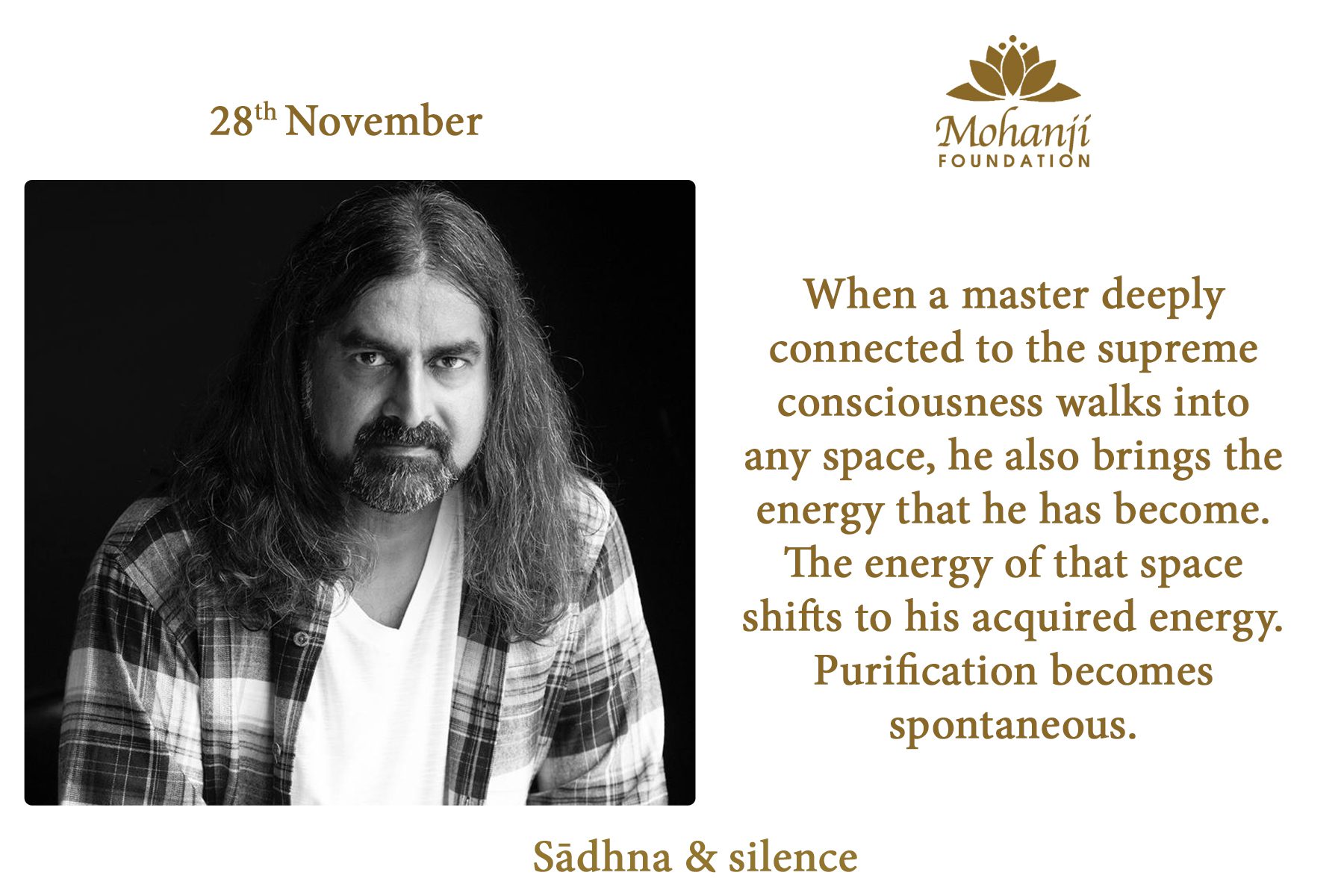
Chitta becomes pure; chitta is the substratum. The platform becomes pure. When the platform becomes pure, God resides there. When the inside is pure, God resides there. Shuddhi, purification, purity – it has great value.
That’s why people say when you get up, immediately brush your teeth – purification. Every word you utter through your mouth shouldn’t be contaminated because you are resting the whole night.
Like that, you take a bath – purification of the body. Your actions, your movements, everything should be pure. Purification of body, purification of the mind, purification of intellect and purification of chitta – thesubstratum, which holds all – the body, mind, intellect, that whole basis of the subtle, or the operating platform of the subtle – sukshma. If that’s pure, God resides there.
You only see God. There’s nothing else. Everybody and anybody coming to you are representations of Narayana, the destination of man – supreme consciousness.
So, as an enchanter, he wasn’t doing anything deliberately. It was his nature. That nature continues. That’s why you see different dimensions. One dimension in Guruvayur, another dimension in Puri. It’s supreme consciousness.
That’s why he has big eyes, which means many eyes. How do you otherwise represent many eyes? Extended limbs to embrace because the whole life is embracing you. Life is hugging you. You are running away from life. If you hug life back, you’ll be at terms with every activity. Everything that comes to you – the good, the bad, everything will be part of you. That’s the Bhagavan.
Krishna as a king
Now, Krishna as a king. This is almost like a conclusion for me, Krishna as a king. You like to just remember Krishna as a king. Nobody slept hungry in his kingdom, but he never controlled people so much because there was exuberance; there was abundance because Lakshmi lived there. Where does Lakshmi live? Lakshmi is auspiciousness and lives where there’s auspiciousness, goodness, and righteousness.
The situations of war and death, torture and killing, even hatred and jealousy – Lakshmi will notlive there because auspiciousness isn’t there. How can you ensure Lakshmi lives with you? Have righteousness as your operating platform, goodness as the most important part of your character – goodness, righteousness, love, kindness, compassion.
Krishna, as a king, ensured nobody slept hungry. Nobody had any big problems because karma brings problems. Karma brings situations which nobody can control. That was allowed. But at the same time, when help was sought, it was given. It was always given.

Krishna’s rule was extremely benevolent and unselfish. He didn’t do anything for himself. Of course, he was an avatar. He never wanted anything. But the same was with the Dharmaputra, Yudhishthira. He never ruled selfishly, never for his family. No nepotism, no greed, no accumulation of wealth – nothing. Whatever he had, he shared.
That’s how the rule should be – for the country, for the people, for the well-being of the entire earth. Not just people, the birds, the animals, the trees, the plants – every being should exist peacefully.
All you need is peace – shanti. That’s exactly how Krishna ruled his country. But he knew very well that Dwarka was too good. To anchor Dwarka, it takes an avatar.
You need an avatar to anchor such a creation. When the avatar leaves, it can shake the foundation of the city. He knew it would go down the water because it was too good. He shifted all the people to Brindavan and other places because he knew it would go. He was farsighted. He could see beyond. He knew what was going to happen, what’s happening now.
The Yadava clan also got disintegrated. Krishna didn’t even do anything to protect because if adharma comes, destruction has to happen. Krishna didn’t even touch that, even in his family.
When you’re with an avatar, when there’s abundance, arrogance is part of it. Arrogance comes without knowing. Ego happens. When ten people start recognizing you, ego comes over. ‘Oh, I am important. I am somebody.’ The ego is like that. Like a shadow, it follows you. Arrogance is its expression. That leads to destruction. That’s what happened with the Yadava clan. When Krishna left, the Yadava clan collapsed. That’s exactly how it happened.
Also, remember that Krishna, whatever he delivered, had distinction. What he delivered in Kurukshetra, the battlefield, was distinct for that purpose – how to lead a life righteously,how to live a whole life with the aim of completion, a complete life.
If you understand Bhagavad Gita, you’ll understand how to lead a life which is rooted in completion. What’s the importance of completion? Everything that you go through in life should make you complete so that you don’t want that anymore.
‘Oh, I need much more of this.’ That means you are asking for more time, more lifetimes, sometimes. Maybe in this life, if you can’t achieve it, you may have to come back. Every situation, everything should be completion. ‘I had it; I am happy. Thank you. If it comes again, good; if it doesn’t come, no problem.’ Bhagavad Gita tunes you, sets you, tones you to that level or that you’re oriented to completion.
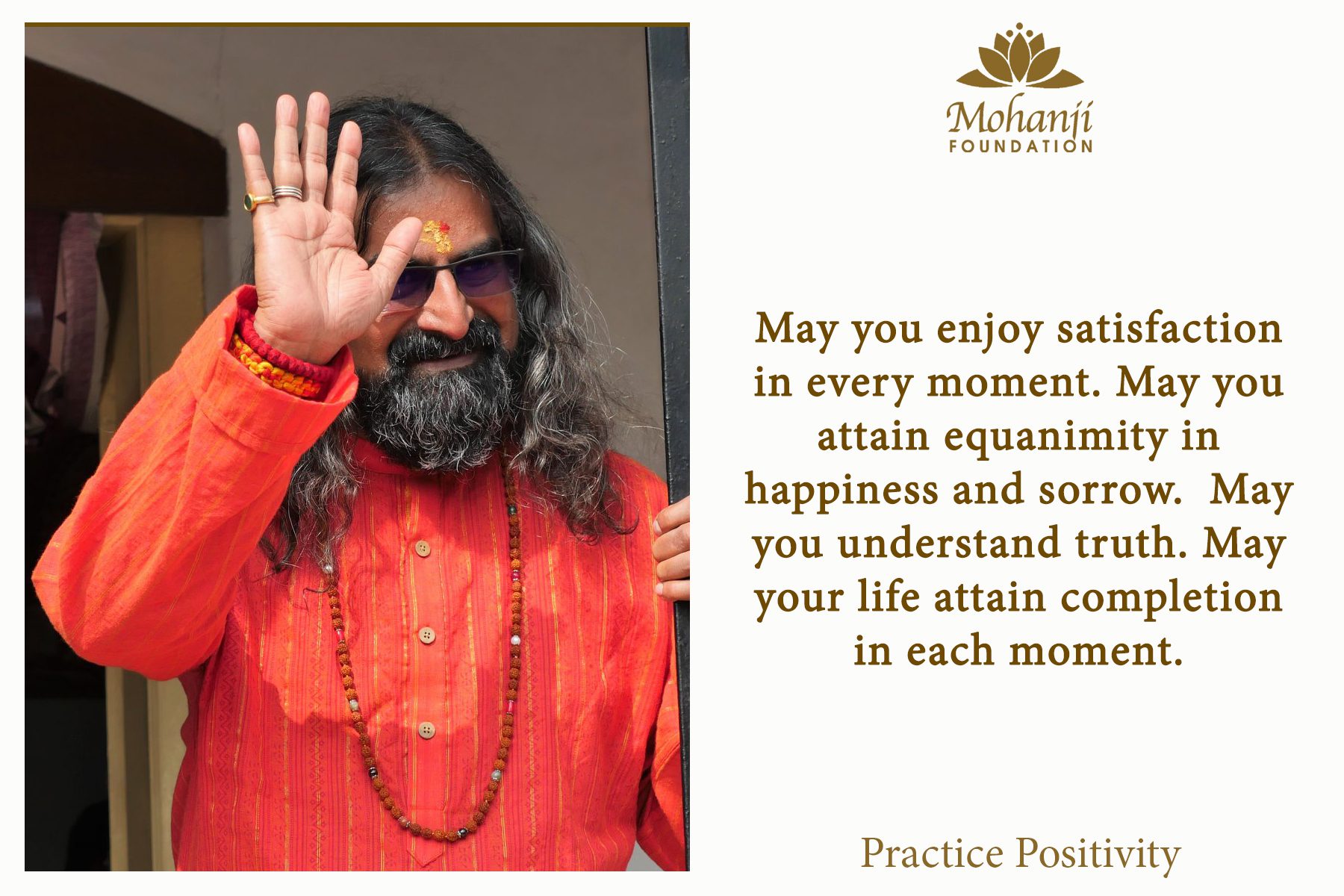
At the same time, when Uddhava asked the question in Uddhava Gita, Krishna didn’t talk about this. He spoke about dissolution. That’s the difference. What’s the aim of life? To merge back with consciousness. If you know you are a unit, you can know the universe. First, you know yourself as a unit. Otherwise, you cannot know yourself as the universe.
This is the difference. This is exactly what makes him an avatar – the difference in communication, oriented and focused on the event or the situation and completely different. The whole aim is to bring awareness and to delete ignorance.
Just like I said earlier, when an avatar stands by you at the time of your death, or if you remember an avatar at the time of your death, it wipes off the ignorance of personality, ignorance that you are the personality and liberates you to consciousness. What more can we ask for?
This is what I wanted to tell approximately.
Host: Thank you. It was so healing to even hear your voice.
Mohanji: Thank you. Nowadays, I don’t do that much.
Host: If you have some time for questions from the audience?
Mohanji: I’ll just conclude it with two more points.
Be practical
One is to look at Krishna as practical.
Everything he did was practical – no theory. Theories were all like he explained about how to live a life – all those are fine but practical. Beyond spiritual, be practical. When you approach spirituality, when you approach life, always ask one question: “Is this practical for me?”
If something isn’t practical for you, you should have the guts and courage to say – not my cup of tea. Even if it’s given by your most respected person, you say, “I can’t handle this. This is not within my capacity. I am not tuned, oriented or capacitated to handle this.” Very important.
Likewise, if you look at Krishna, he always came when called. He didn’t walk in and say, “Can I help you?” It’s a clear sign of stabilized avatar, a very stable avatar. This all makes him always complete.

When you approach spirituality or life, always ask if it’s practical for you.
– Mohanji
He came when he was called. When somebody asked the question, “Why didn’t you come before the disrobing of Panchali?” he said, “I wasn’t called. I came when I was called.” That’s the point.
Free will is given utmost importance. Free will to choose your path, choose your style, choose how you want to live, and choose everything. Free will is given utmost importance. That’s exactly how dharma works.
In dharma, we are all born; we are karmic beings. We are all born, and our free will is of utmost importance; otherwise, our personality is compromised. Krishna never interfered in free will, but when help was asked, it was given. This we should remember.
The best sadhana
The other point is – the best sadhana in today’s time, in Kali Yuga, is to remember. We may not get enough time to sit down and chant and pray, but remember. Remembrance and surrender – if this can be made into a perfect sadhana, the inside will be pure. Chitta shuddhi, as I told you, the chitta (inside) would be pure.
Likewise, your Kurukshetra is your own life, your daily life;how you manoeuvre in your daily life is exactly how you connect to consciousness.
Remembrance, handling life as it comes without resistance, acceptance, surrender, and also flexibility. If you surrender, flexibility and acceptance come together as you lead your life. If you live your life like this, definitely, you’re in tune with Krishna consciousness.
You can see practicality, flexibility, leading life or accepting life as it comes, zero resistance, finding solutions and moving on. That’s your sadhana, your penance, and your meditation in Kali Yuga. Thank you. Jai Sri Krishna!
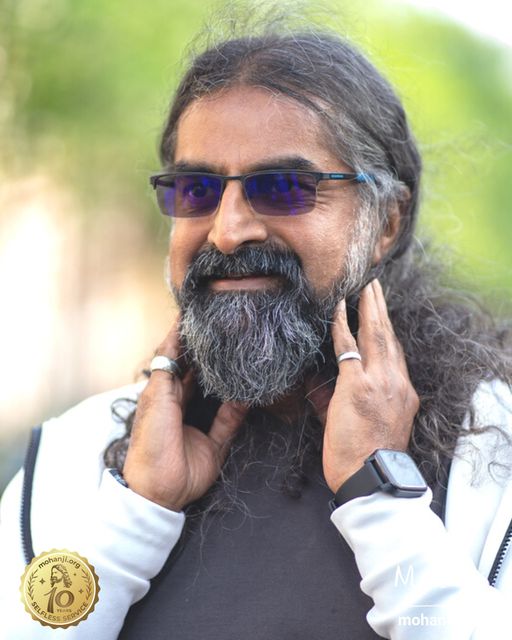
Remembrance and surrender – if this can be made into a perfect sadhana, the inside will be pure.
– Mohanji
Q: Why do we, as devotees, usually worship Bala Gopal of Brindavan, Krishna’s enchanting version of him, as you mentioned before? (The question cannot be easily heard)
Mohanji: Everybody loves children, right? We all love children. There’s no ego; there’s no personality that strong when it’s a child. Why do we like children more and we have a problem with adulthood? Because we can’t handle personalities.
See, we analyze, right? We analyze, we compare, we tend to criticize, and judge – all those things, but with children, we accept. If a child does a prank, we have no problem. “Oh, this is a child, no problem.” Krishna as a child, is, of course, really beautiful and enchanting, but apart from that, it’s easier to connect.
Q: You already spoke about liberation. Krishna liberated his enemies. What about devotees? Did he liberate Arjuna and the Gopis as well?
Mohanji: Again, you need to go back to the free will aspect. Is liberation your purpose?Most people will say no. Imagine people coming to a temple, even Brampton temple. Many people come there searching for peace of mind. I’m not trying to diminish the quality of devotees. I’m saying mostly why we go to a temple. Most people go to a temple asking for something.
How many people come to Krishna saying, “I need you. I don’t need anything else. Just give me yourself.” How many people? Depending on what’s your purpose or what’s your priority, that’s delivered.
If Krishna is your priority, then you may go through various hardships because all that you’re clinging to, you may have to drop. Your personality-related matters, such as position, possession, and relation – you may have to drop them – not fully, not that you run away from your dharma.
Pitru dharma (duty as a father), putra dharma (duty as a child), all those dharmas must be preserved or handled properly, but at the same time, you are surrendered to the Lord, and you’re telling Krishna, “All I need is you.” Then, in that case, you’ll get Krishna, of course, but you may have to go through all the pains of life, but for that, we aren’t ready.
When pains are happening, we are not ready. “No pain for me.” Suppose you’re able to face it, like when Kunti Mata told Krishna to give pain. Kunti Mata said to give pain so that she remembers Krishna all the time. But will anybody pray like that?
Normally we go, “Please, get my daughter married to a good guy or help my son get a good job”, or something like that – the shallowness of our desires or the usual desires, that’s what we go to a temple or a church or a mosque for. That’s what the point exactly is.
That’s your free will, but otherwise, if you say, “You take care of me; I leave myself to you”, the right thing will happen to you for liberation.
Everything will be liberation-oriented. Things will work in that moksha (liberation) path; otherwise, it won’t because that’s not the agenda. The agenda is terrestrial things like position or relations or something. That’s the difference here.
Q: This the time of wars and gossip. Why, after Dwapara Yuga, Kali Yuga had to come when Krishna established righteousness?
Mohanji: Well, that’s a cycle of time. Satya Yuga was a fully conscious state. All the beings of Satya Yuga were fully conscious. They were operating from rithambara buddhi level (cosmic consciousness level), where they completely knew what they were, why they were, how they were – all these things.
Most of the creations and the prajapatis (supreme creators) were all existing, and also, you can see the interaction, like even Ravana was interacting with Lord Shiva because a person who had the capacity to be in the level of subtlety where he can interact with a deity, those were existing. Then there was a constant degeneracy.
Timespan was reduced. Like they say that in the Treta Yuga, Sri Rama’s time, 10,000 years was the lifespan of a person. If you read the story of Ravana, he cut one head at a time, every 1000 years or something and before all ten heads were cut, God appeared.
During Krishna’s time, lifespan was 1000 years. Now our time is hundred years, but you look at the number of people who are born in this time. Many people are born, but most are unconscious. They think they are the personality; they are only eating, drinking, sleeping and doing things of a terrestrial nature.
That’s because degeneracy is part of the earth’s cycle, and everything is reborn. The cycle happens, like in the story of Rama. When Rama was coming back after the war rescuing Sita in the Pushpaka Viman (a vehicle), Sita was fiddling with her ring, and it fell into the ocean. So, Hanumanji jumped.
Before that, Rama said, “There’s Rama written on the ring, so you can pick it up.” Hanumanji went down, and he saw many rings with Rama written on them, so he didn’t know which one to pick. He came back and asked Rama, “It’s surprising that I saw many rings.”
Rama said, “This story has been enacted many times. I was Rama many times; you were Hanuman many times. That’s why there are many rings there.”
The platform of the earth remains; the cycle changes. It’s recycled; that happens. This is a continuous process. It’s always a continuous process, but our priorities take us to our destination. That’s the only difference here.
Individually, we can be in Satya Yuga, which means we are fully in a conscious state. Individually, we can be in Treta Yuga, in that level, like a 25% reduction in consciousness. Then probably, Dwapara Yuga could be a 50% reduction of consciousness, and Kali Yuga is mostly unconscious (state).
From that degeneracy then comes the fully conscious state, but then recycling has to happen. Many people who are born in Kali Yuga are only born in Kali Yuga. They will hibernate enough time until the next Kali Yuga happens.
Please understand. That’s a cycle of degeneracy or cycle of evolution, let’s say. Let’s not use a negative word – degeneracy, but that’s how it is. Did I answer your question, or did I deviate?
Thank you.
(Mohanji chants a Sanskrit shloka about Lord Vishnu)
Shantakaram bhujagashayanam padmanabham suresham
Vishwaadhaaram gagan sadrusham megha varnam shubhangam
Lakshmikantam kamal nayanam yogibhirdhaan gamyam
Vande Vishnum bhavbhay haram sarva lokaik naatham.
Om namo bhagavate Vasudevaay.
Om namo Narayanaay.
Thank you for inviting me. Love to all and Jai Shri Krishna!
Transcribed by Nada Raković
Proofread by Yogesh Pandit
